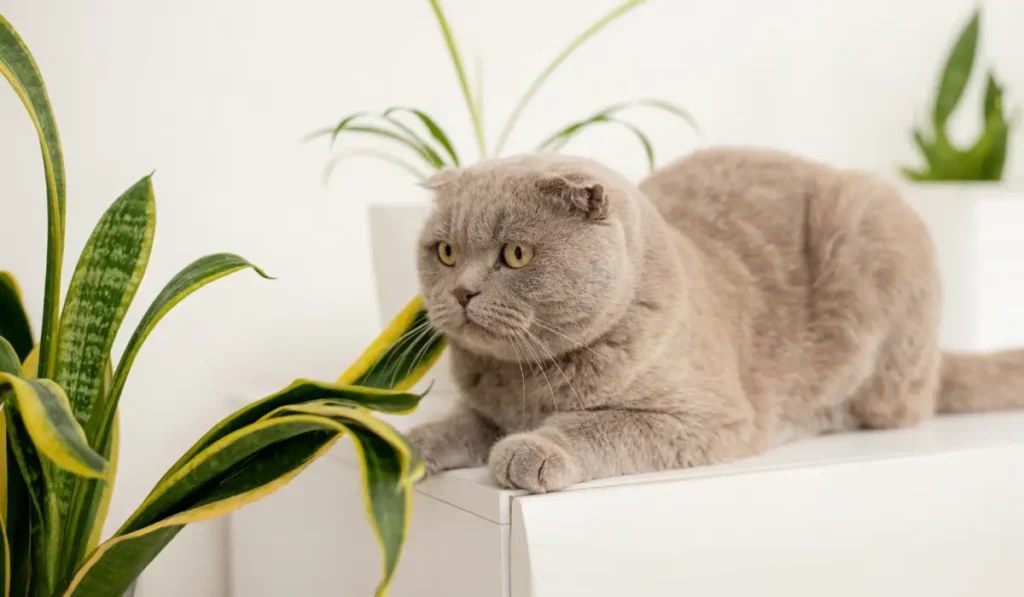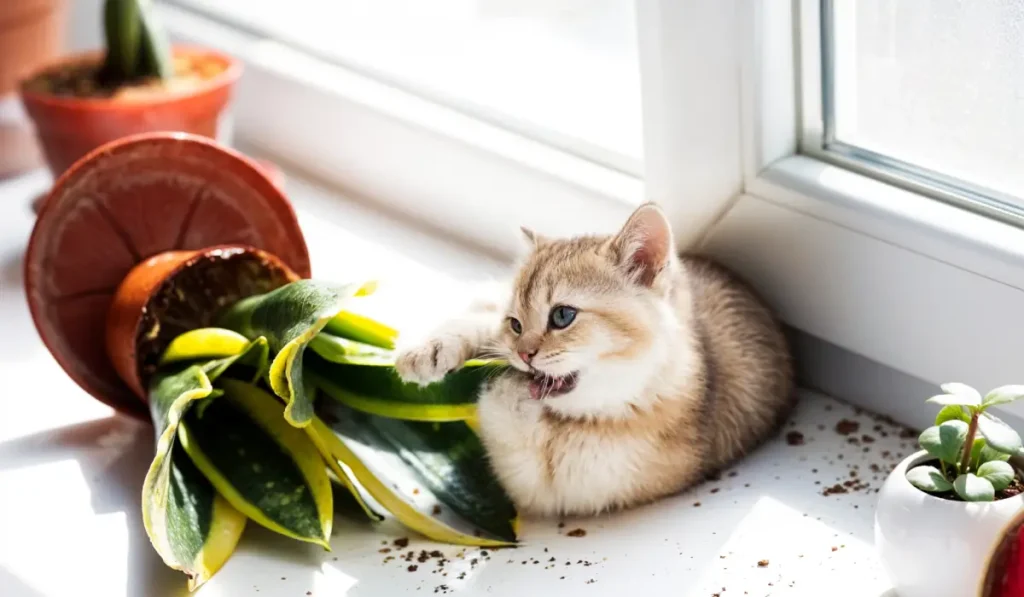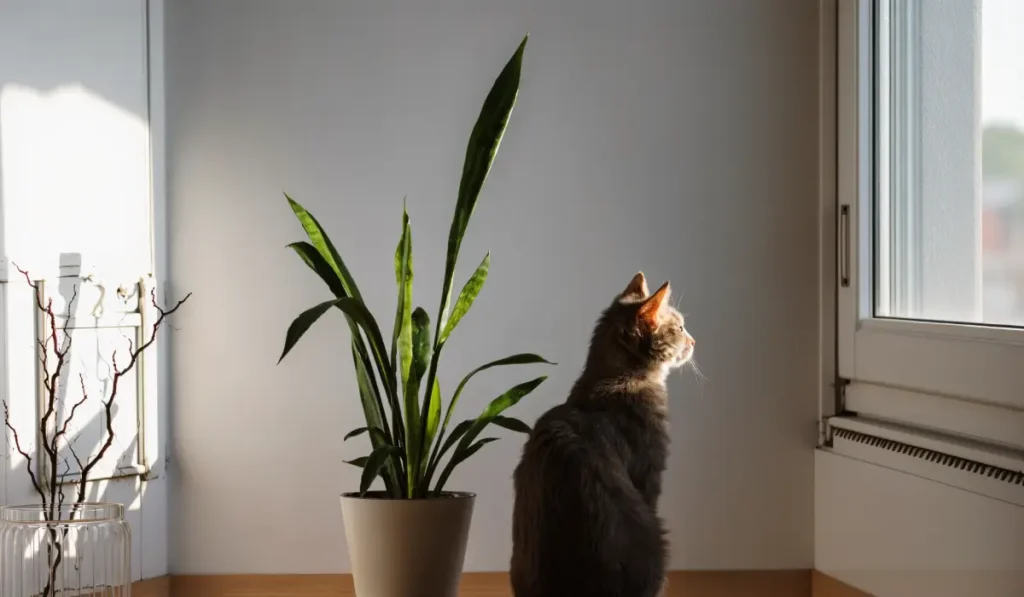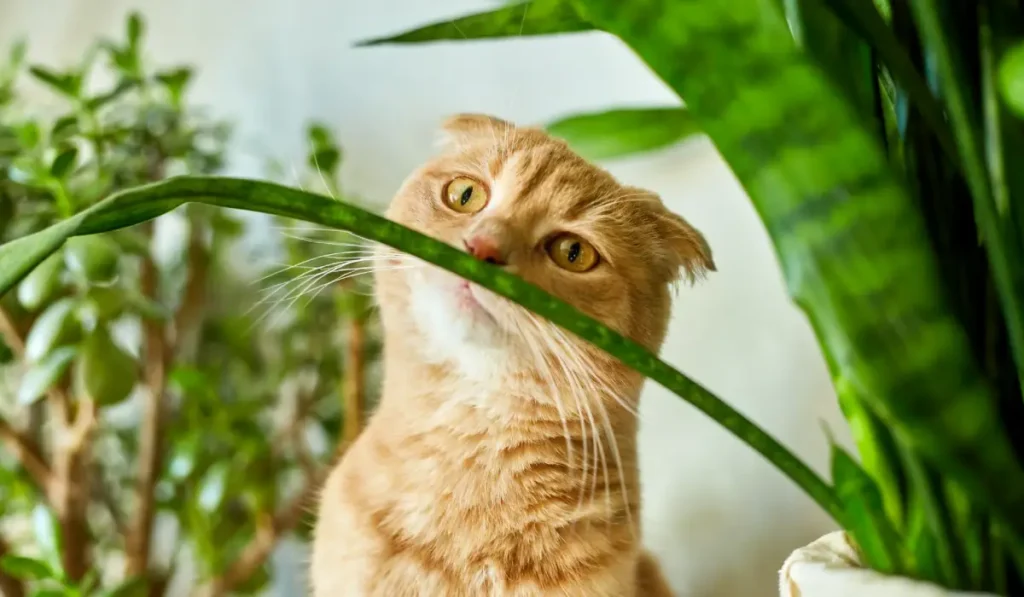Are Snake Plants Toxic to Cats
Snake plants (Sansevieria) are a top pick for houseplant lovers. With their striking looks and low-maintenance care, they’re hard to resist. But if you’re a cat owner, there’s a catch. Cats are naturally curious creatures—always sniffing, chewing, and exploring. This can be a problem if your feline friend decides to nibble on your snake plant.
So, the big question is: Are snake plants toxic to cats?
The short answer is yes. Snake plants are mildly toxic to cats. While they’re not deadly, they can cause some unpleasant symptoms if ingested. This doesn’t mean you have to give up one of your loves, though. With a little knowledge and planning, you can keep both your cat and your plant safe and happy.
Here, we’ll break down everything you need to know about snake plant toxicity, what to do if your cat takes a bite, and how to create a pet-friendly space for your greenery. Let’s dive in!
Table of Contents
What Makes Snake Plants Toxic to Cats?

Snake plants (Sansevieria) are toxic to cats because they contain saponins. Saponins are natural chemicals found in many plants. They help protect the plant from insects, fungi, and animals. While useful for the plant, saponins can harm cats if eaten.
Saponins are a type of glycoside that affects cells. When a cat eats them, they irritate the stomach and intestines. This irritation leads to digestive problems and other discomforts.
Symptoms of Snake Plant Toxicity in Cats

If a cat eats a snake plant, it may show several signs of illness. The severity depends on how much was eaten. Some symptoms appear quickly, while others take time.
Common Symptoms:
- Vomiting – The body tries to remove the toxins.
- Diarrhea – The digestive system becomes irritated.
- Drooling – The mouth may feel uncomfortable.
- Nausea – The cat may seem restless or refuse food.
- Loss of appetite – Eating becomes difficult due to stomach pain.
- Lethargy – The cat may feel weak or tired.
- Swelling in the mouth or throat – Irritation can cause mild swelling.
- Pawing at the mouth – The cat may try to remove the bad taste.
- Difficulty swallowing – The throat may feel irritated.
Symptoms are usually mild to moderate, but it’s best to monitor your cat. If signs worsen or persist, contact a veterinarian immediately.
What to Do If Your Cat Eats a Snake Plant?

If your cat eats a snake plant, act quickly. While the toxicity is usually mild to moderate, it can still cause discomfort. Follow these steps to help your cat recover.
- Remove any plant pieces – Check your cat’s mouth for any remaining plant pieces. Gently wipe them away with a damp cloth or your fingers. This helps prevent further irritation.
- Rinse their mouth – Offer your cat fresh water to drink. If possible, use a wet cloth to gently wipe around the mouth. This helps remove the bitter taste and reduce irritation.
- Watch for symptoms – Monitor your cat for vomiting, diarrhea, drooling, or weakness. Symptoms usually appear within a few hours. Some cats may also paw at their mouths or refuse to eat.
- Do not induce vomiting – Never try to make your cat vomit. This can cause more irritation in the throat and stomach. Let the symptoms run their course naturally.
- Contact a veterinarian – If symptoms are severe or last more than a few hours, call a veterinarian. Be ready to describe what your cat ate and how much. If possible, bring a piece of the plant to the vet.
- Provide a calm environment – Keep your cat comfortable and hydrated. Offer fresh water and a quiet place to rest. Avoid giving food until the symptoms improve.
How to Keep Cats Away from Snake Plants?

Cats are naturally curious and love to explore, including nibbling on houseplants. Since snake plants are toxic to cats, it’s important to keep them away. Here are some effective and simple solutions to protect both your plant and your pet.
1. Add Barriers to the Soil
Cats often dig in plant pots, so covering the soil with rough or uncomfortable materials can deter them. Try:
- Pinecones – Prickly and naturally scented, they keep cats away.
- Rocks or pebbles – Heavy enough to stay in place, making it harder to dig.
- Garden bark – A natural option that discourages digging.
- Aluminum foil – Cats dislike the texture and sound.
- Sticky tape (sticky side up) – Cats avoid stepping on sticky surfaces.
2. Use citrus scents
Cats dislike citrus smells, so placing spent orange or lemon peels around the pot can help. For best results:
- Put peels in a small tray near the plant to avoid altering soil pH.
- Use fresh pinecones— some release a citrus-like scent when new.
- Spray diluted lemon juice around the pot (but not directly on the plant).
3. Provide alternative plants for your cat
Cats often chew on plants out of boredom. Giving them their own cat-safe plants can help. Try:
- Cat grass – A fun and safe option for nibbling.
- Catnip – Keeps them entertained and away from toxic plants.
- Spider plants – Non-toxic and interesting for cats.
4. Keep the plant out of reach
If possible, place the plant somewhere your cat can’t access:
- On a high shelf or hanging planter.
- In a room your cat can't enter (like an office or bathroom).
5. Use motion-activated deterrents
- Motion-activated air sprays release a harmless burst of air when your cat gets close.
- Ultrasonic pet deterrents emit sounds cats dislike, but humans can't hear.
6. Train your cat to stay away
- Say "No" firmly if they go near the plant.
- Clap your hands or use a gentle spray bottle (with plain water) to discourage interest.
- Reward good behavior when they leave the plant alone.
Is a Snake Plant Deadly to Cats?

A snake plant is toxic to cats, but it is unlikely to be fatal. The plant contains saponins, which cause vomiting, diarrhea, and nausea when ingested. These symptoms can make a cat feel very sick but are usually mild to moderate. Most cats recover with little treatment, especially if they only consume a small amount. However, if a cat eats a large portion of the plant or has a severe reaction, it may lead to dehydration and weakness, which can become dangerous if not treated.
While death from snake plant poisoning is extremely rare, it is still important to monitor your cat closely. If symptoms last longer than a few hours, or if your cat becomes very weak, refuses food, or has difficulty breathing, contact a veterinarian immediately. Quick action and proper care will help ensure your cat stays safe
Final Takeaways
I hope this blog has answered your question, are snake plants toxic to cats. Snake plants contain saponins, which can upset your cat’s stomach and cause vomiting or diarrhea. While not deadly, they can make your pet feel sick.
To keep your cat safe, keep the plant out of reach and use safe deterrents. If your cat eats it, watch for symptoms and call a vet if needed. With the right care, you can enjoy your plant while keeping your cat happy and healthy.
FAQs
No, cats don’t instinctively know which plants are toxic. Their curiosity often leads them to chew on houseplants, including poisonous ones. While some cats may avoid certain plants due to their smell or taste, it’s not a reliable defense. To keep your cat safe, it’s best to remove toxic plants or place them out of reach.
Yes, all varieties of snake plants (Sansevieria) are mildly toxic to cats and dogs. They contain saponins, which can cause digestive discomfort if ingested. This includes popular types like the Sansevieria trifasciata (Mother-in-Law’s Tongue) and Sansevieria cylindrica (Cylindrical Snake Plant). Always keep snake plants away from pets to avoid any risks.
Symptoms usually appear within a few hours after ingestion. Common signs include vomiting, drooling, and diarrhea. These symptoms are typically mild and resolve within 24-48 hours. However, if your cat shows severe or prolonged symptoms, contact your vet immediately.
